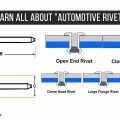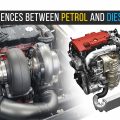It is a common misconception that fitting a turbocharger is as easy as bolting one on!
Some people imagine In 99% of the cases, Whether it is petrol or diesel, the engine was simply never designed to cope with that sort of increase in power and torque. So, before you can even start thinking about matching and Fitting a turbocharger you must first consider the engine.
The fundamental differences between a naturally aspirated and A turbocharged engine is: The compression ratio, camshaft profiles, fueling, ignition timing, Type of pistons and the strength of some rotating parts.
A turbocharger is an engine component can increase the power output by 30% quite easily and up to 100% in some cases. Therefore, the first thing to look at is the engine itself.
Is the engine capable of withstanding that type of increase in its present state? Was it capable when it was new? Likewise, are the clutch, transmission, and brakes up to the job?
To carry out a conversion on a naturally aspirated engine, the following modifications to the engine would need to be undertaken to effectively complete the retrofit:
CAMS & PISTONS
Fabrication of both inlet and exhaust manifolds to fit the specific application. Engine compression ratio to be checked and lowered where necessary, ideally, this would be between 7.5:1 and 8.5:1 (typically) to allow any significant boost pressure to be used.
This can be achieved in one of three ways: Preferably fitting of forged low compression pistons, Machining the top of the standard pistons or the fitting of a thicker head gasket or spacer plate.
CAMSHAFT SPECIFICATION
The camshaft specification should also be checked to ensure that the duration and Valve overlap is not too great for the application. Ideally, this would be a camshaft of mild duration and overlap.
THE FUEL SYSTEM
i.e. injectors, fuel pump, pressure and mapping of the ignition system would; Also, need to be modified for the increased requirements of the turbocharger. The ignition timing needs to be retarded as the boost pressure rises.
To specify the correct turbocharger for the application, We would require the following basic information:
- a) Engine capacity
- b) Maximum rpm
- c) Application or usage i.e. streetcar/drag/race etc.
- d) Projected horsepower and torque requirements
- e) Boost pressure requirements
- f ) If an engine is to be intercooler or charge cooled
If you are determined to still go ahead with turbocharging your vehicle, you must first locate a conversion specialist and seek advice from them.
Turbo Dynamics do not carry out this type of work, but simply provide advice, Turbocharger matching and supply and some ancillary products (Such as turbine inlet and outlet flanges; oil pipes, fittings, and flanges; High-pressure silicon hose lengths and elbows; dump valves…)
We can provide drawings of flanges giving dimensions for fabrication of the manifold. Conversions can be very costly (typically between £2500 to £5000), So, get a quote from your conversion specialist before considering the project further.



